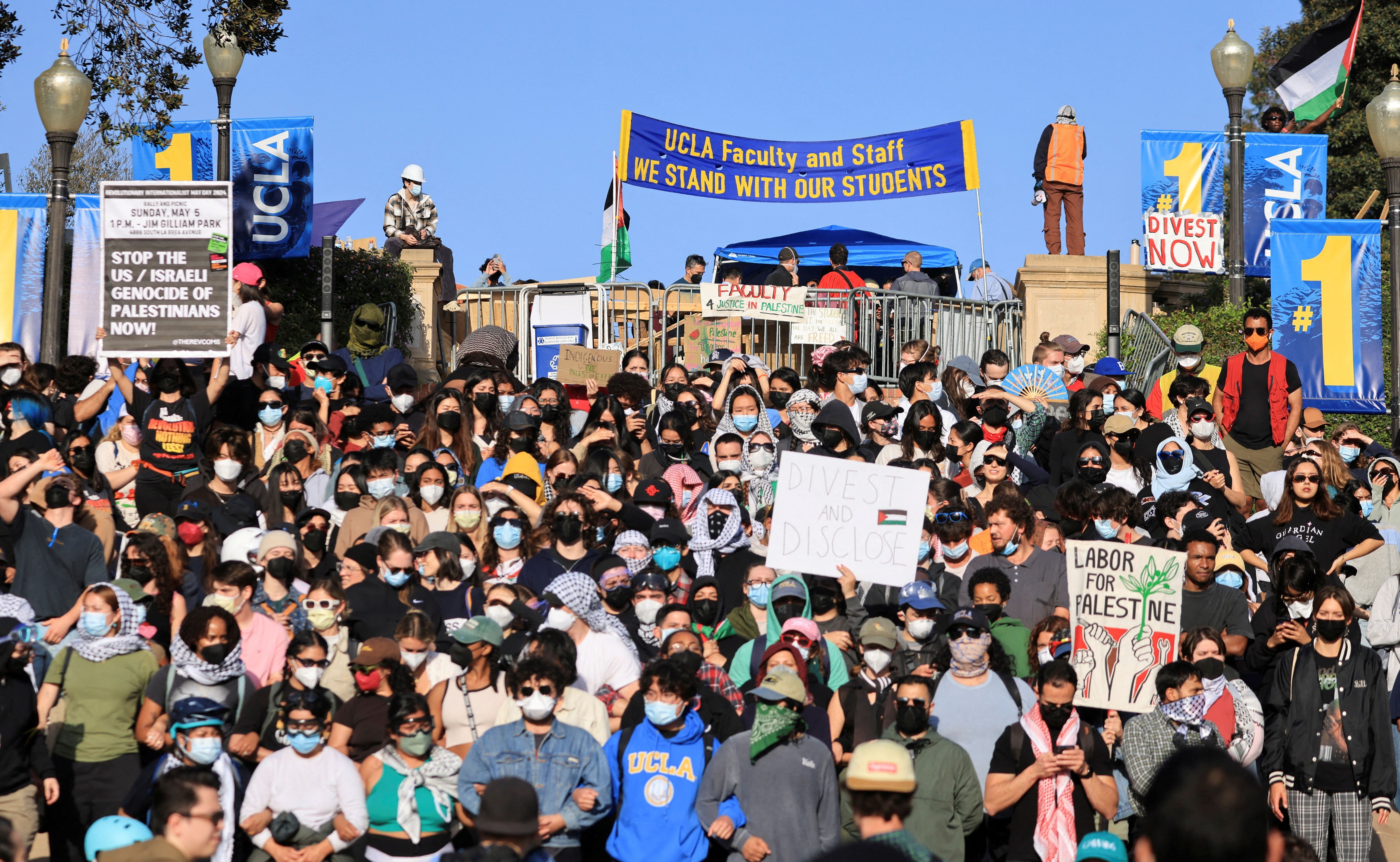The campus protests over the Israel-Gaza war and similar demonstrations throughout the United States are ongoing, with questions about free speech, law enforcement overreach, anti-semitism, and individual university responses dominating the headlines.
While there have been some pro-Israel “counter-protesters,” the overwhelming energy right now is in sympathy for the Palestinians and the thousands of innocent civilians whose lives were lost due to Israel bombardments and tank fire, not to mention the second hand effects of the siege and lack of healthcare. They demand that the U.S. government stop fueling the war with American weapons, and for a ceasefire to end the suffering.
But at this point has the media — and therefore the American public — been more focused on the protests rather than the life and death issues the demonstrators ostensibly want raised? This seems particularly apparent given that most of the coverage tends to treat the civilians’ plight and apparent Israeli atrocities — what students are actually protesting — as a kind of side point, if those topics are mentioned at all.
In the midst of the protests last week, the United Nations revealed, “Disturbing reports continue to emerge about mass graves in Gaza in which Palestinian victims were reportedly found stripped naked with their hands tied, prompting renewed concerns about possible war crimes amid ongoing Israeli airstrikes, the UN human rights office, OHCHR, said on Tuesday.”
The story continued: “The development follows the recovery of hundreds of bodies ‘buried deep in the ground and covered with waste’ over the weekend at Nasser Hospital in Khan Younis, central Gaza, and at Al-Shifa Hospital in Gaza City in the north. A total of 283 bodies were recovered at Nasser Hospital, of which 42 were identified.”
Then the gruesome description from the U.N.: “Among the deceased were allegedly older people, women and wounded, while others were found tied with their hands…tied and stripped of their clothes.”
This news of the mass graves is known to some. Most major news outlets carried it, but below the proverbial fold. It was not a major topic of discussion, on cable news panels or at the top of any headlines in the United States. Meanwhile, children continued to be killed by airstrikes throughout Gaza, and in a grim turn of events, a premature infant who had been taken alive from the womb of her dead mother after a bombing died in the incubator last week.
Ironically, a major media focus on stories like these in the first months of the war since Oct. 7 led in part to the protest movements, which have exploded in recent days on college campuses. So how does this bode for American public opinion today, when most of the news coverage is about campus protests and not on the ongoing airstrikes, the lack of food, clean water, healthcare or the pending Rafah invasion? The conditions on the ground have not changed, but media interest has, apparently.
After Israeli Prime Minister Benjamin Netanyahu recently announced that he intended to push his country’s forces into the westernmost provision of Rafah, Rep. Ro Khanna (D-Calif.) asked the Biden administration on Tuesday about the potential for civilian casualties. Defense Secretary Lloyd Austin responded that Israel’s offensive has claimed “far too many civilian deaths already.”
“We certainly would want to see things done in a much different way” than operations across the rest of Gaza, Austin said.
How many Americans saw this exchange in their social media feeds, as opposed to the saturation of protest footage and accompanying vitriol between both sides over the students’ rights – or not – to be overtaking buildings, constructing tent cities, shutting down classes, and more?
The media should have the ability to cover more than one story at a time, but so often, they refuse to. So, somewhat ironically, the protests have even been a distraction from the actual war in the Middle East. ABC News even acknowledged it, reporting Wednesday, “After weeks of nonstop coverage of destruction and death in the Gaza Strip, media across the wider Middle East have latched onto the demonstrations roiling American university campuses over the Israel-Hamas war.”
It is much easier for the protests to overshadow the actual misery in Gaza and that is clearly what is happening. While many protesters’ intentions might be noble, is there a better distraction right now for Israel to do as it pleases?
This is not an argument for or against the protests. Just an observation that probably deserves at least a minimum moment of thought by anyone genuinely concerned about the current plight of the Palestinians.
- The Sunday talk shows on Israel-Gaza: The blob still reigns ›
- Don't take your eyes off Gaza ›
- Free speech crises loom with crackdown on Israel criticism | Responsible Statecraft ›



 Top photo credit: Ngô Đình Diệm after being shot and killed in the 1963 coup (US National Archives)
Top photo credit: Ngô Đình Diệm after being shot and killed in the 1963 coup (US National Archives) 












